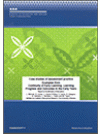This report sets out the Literature Scan for the Continuity of Early Learning project. The literature scan focused on current practice in documenting and sharing learning progress in the early years, summarising New Zealand and International approaches.
The report has three parts:
- Part One: Vision and Debates with a reference list.
- Part Two: The Literature Scan: Introduction and Framework; Competence; Community and Continuity.
- Part Three: The Abstracts for the literature in Part Two.
The debates in the Vision and Debates section provide a wide and visionary view of this project, setting out the different theoretical positions in each Debate and including some of the literature that contributes to an understanding of the issues and to further discussions of a New Zealand vision for the future.
Debate 1 raises two questions: Which educational outcomes are valued? and What educational outcomes should be assessed? It looks at views of valued learning for the mid 21st century and discusses the relationships between knowledges and dispositions/competencies.
Debate 2 raises another two questions: Who does the assessing? and Who is it for? This debate emphasises assessment as a system and combines the two questions in the discussion.
Debate 3 builds on Debates 1 and 2 to consider two final questions about continuity and progression: What are the timeframes? and What are the intended and unintended consequences of the outcomes that have been made visible or demonstrated in assessments? It looks at the notion that learning and therefore assessment is a long-term matter, and includes issues about single and multiple pathways and the constructions of progressions.
The three sections in Part Two—Competence, Community and Continuity—are aligned to these three Debates, and scope some of the literature that informs the ways in which the Debates have been explored or exemplified in research and practice in New Zealand and elsewhere.

